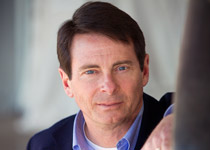Fly out to give back
 Number five for takeoff on this winter Saturday morning, we were soon headed northeast. The traffic display in my old Beechcraft Bonanza blossomed with dots, more than I can remember in a while, especially on a winter day—a good sign. Granted, half of the traffic was part of our flock headed out for breakfast. Even discounting that, though, people were clearly out for midwinter flying experiences after a couple of back-to-back snowstorms and unusually cold weather in the mid-Atlantic region. This Saturday was clear and mostly smooth—the engines loving the cold, dense air.
Number five for takeoff on this winter Saturday morning, we were soon headed northeast. The traffic display in my old Beechcraft Bonanza blossomed with dots, more than I can remember in a while, especially on a winter day—a good sign. Granted, half of the traffic was part of our flock headed out for breakfast. Even discounting that, though, people were clearly out for midwinter flying experiences after a couple of back-to-back snowstorms and unusually cold weather in the mid-Atlantic region. This Saturday was clear and mostly smooth—the engines loving the cold, dense air.
Our mission this day: food, what else? Of course, we all could have gathered at the airport at AOPA’s home base in Maryland, Frederick Municipal, which has a fine little restaurant on it, but what fun is that? Instead a group of eight airplanes piloted by AOPA staff motored 75 nautical miles to Pennsylvania’s Chester County G.O. Carlson Airport for breakfast at the Flying Machine Cafe.
Our ragtag fleet spanned the single-engine gamut, from an Experimental RV and a 1950s taildragger to high-performance travelers. With a total of 16 on board plus a couple of friends who met us there, we nearly overran the café, but no one was in a hurry anyhow. This, after all, was about hanging out together and doing a little hangar flying over a second cup of coffee. The aviation community was alive and well that winter day. Creating those memorable moments is an important part of helping pilots stay connected to aviation.
AOPA’s landmark Flight Training Initiative research in 2010 dug into the positive and negative influences on success for student pilots. Among the five most influential drivers of success was “community.” Successful students felt like they were a part of a special community—a community that recognized and appreciated their achievements. Flight schools that created events and opportunities for pilots to gather and fly together had much higher scores related to community, with student retention and completion rates reflecting those scores.
Building on that, AOPA has implemented a number of programs to encourage flight schools, flying clubs, and others to create such opportunities. Bundled under the You Can Fly brand, the initiatives are all about expanding aviation’s appeal to others, engaging today’s pilots, and bringing back those who have drifted away. AOPA ambassadors around the country are tasked with ensuring AOPA’s valuable resources are getting in the hands of the flying clubs and flight schools that need them most. Hundreds of free Rusty Pilot programs around the country provide an easy path back to the left seat for those who have not flown in years or decades. The AOPA High School Initiative is helping high schools to build science, technology, engineering, and math (STEM) programs with aviation as an emphasis—and there’s still much more to come.
At AOPA’s home airport, we have leased a dilapidated hangar from the city, spruced it up, and turned it into the National Aviation Community Center: It’s a place where pilots and the public can come to learn more about aviation, whether it’s formal safety seminars for pilots or an open house for the public. Simulators and hands-on experiences give kids and adults a glimpse of what it’s like to fly. Free movie nights and other social events build community where none existed before. Dedicated AOPA staff plan events for the center.
These organized efforts can make a difference, but so can every pilot at every airport. With flying season kicking into high gear this month, send a few texts or emails to fellow pilots in your community to plan a spontaneous fly-out breakfast or lunch. Bring along a couple of students or nonpilots to show them what aviation can do for them. Sharing the aviation experience is a reward in and of itself.
Email [email protected]
Follow on twitter @tomhaines29
Tom Haines is happiest when the seats on his Bonanza are full for weekend fly outs.



